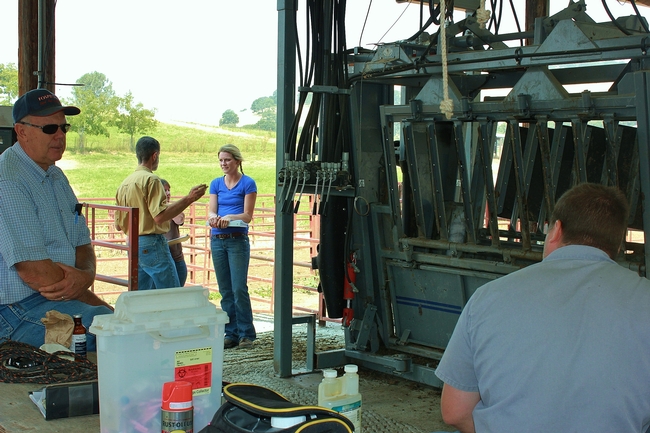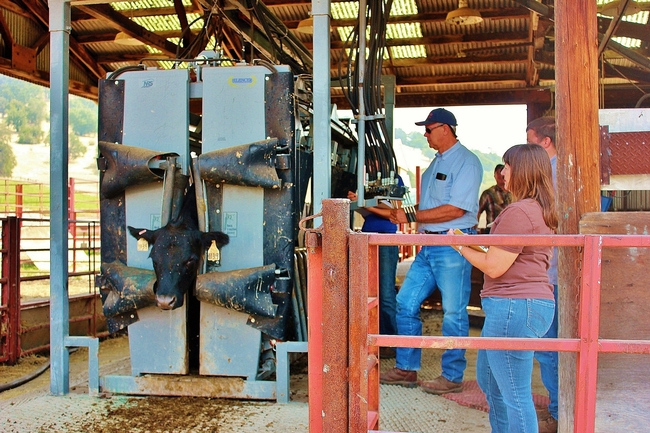- Author: Maddison Easley

In a nutshell, SFREC aims to bring together past, present, and future agriculturists and conservationists in the region who have an interest in discussing the opportunities and challenges associated with farming and ranching in this area and where the industry is headed in the coming years. The intended outcomes include:
- A compelling contribution to the existing extension efforts to create connections and interest in agriculture
- A tool to promote and enable the transfer of knowledge and skills from seasoned professionals to those entering and planning a career pathway in farming and ranching
- An enhanced awareness of the role of local agriculture in a broader sense

The involvement of youth is a central component of the forum. Through collaboration with farmers, ranchers, and agency representatives, high-school aged students from adjacent counties will learn and share information about specific topics under the theme of “The Future of Farming and Ranching in the Sierra Foothills”.
“As a retired ag teacher, I have seen the struggle that students experience between simply having the desire to go into farming or ranching, and grasping the realistic details involved with that livelihood. Working with local producers who have the first-hand experience and know-how will be a great learning opportunity for our future agriculturists,” said Karen Henderson, advisory committee member and Live Wire Products representative.
Be on the lookout for more information and marketing flyers for this inaugural event at the Sierra Foothill Research & Extension Center.
- Author: Jeremy James
- Contributor: Maddison Easley
On November 5th, 2013, SFREC will bring together UC researchers, land managers, producers and conservation professionals from across the state to explore some of the latest research findings and management strategies on two of the most serious rangeland weeds, medusahead and barb goatgrass. Estimates indicted these invasive species may decrease forage quality and production by up to 70 percent. Additionally, these plants increase the incidence of eye problems, such as pink eye in beef cattle. Intermountain species like medusahead create significant fuel accumulation - increasing the frequency of dangerous wildfires that destroy both livestock feed and critical wildlife habitat.

Medusahead Forum
- Author: Maddison Easley


The assessments are confidential and will be used to generate training materials that producers can then utilize to improve the health and welfare of their herds. The leaders and key individuals involved with this project include Cassandra Tucker of the UCD Department of Animal Science, Bruce Hoar – the Western Institute for Food Safety and Security, and UCD graduate student Gabrielle Simon.

Here are a few useful links to additional information and resources about beef health and welfare:
http://www.beefresearch.ca/research/animal-health-welfare.cfm
http://www.nal.usda.gov/awic/pubs/Beef/overview.htm
http://awic.nal.usda.gov/farm-animals/livestock-species/cattle
- Author: Maddison Easley

Last week the Sierra Foothill Research and Extension Center was fortunate to host a group of high school-aged 4-H students and adults for a short tour of our facilities. About half of the group was visiting from Wisconsin through an exchange program and noticed the significant difference in landscape and ecosystem types. The other portion of the group members were locals involved with Yuba-Sutter 4-H. We discussed the role of the REC system, focusing on our own Center and why it is important to have research facilities available. Previous projects, such as the Forbes Hill Oak Clearing, were talked about and visually showcased. The tour concluded at the charming Yuba River Education Center, following a short hike on one of our nature trails.
It was a relaxing, educational, and enjoyable interaction with young aspiring minds and devoted adults. The staff at SFREC are looking forward to the next engagement involving 4-Hers or other local youth. Conservation, cooperation, communication, and commitment. These are four concepts that were highlighted that I hope our visitors will remember, practice, and share.
- Author: Jeremy James

This blog allows regular updating of key activities at SFREC to the broader agricultural and natural resource community. Most importantly remember we are here for you! We value any comments or suggestions you have on our posts and encourage you to contact us with specific questions, blog post suggestions, interest in research, to schedule a tour, or to discuss future events.






